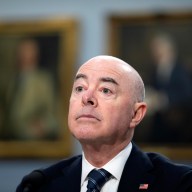Originally published on Feb. 20, 2016.
Opioids claimed a record number of lives in Massachusetts last year, more than tripling what they were a decade ago, and authorities say thepowerful synthetic drug fentanylis to blame.
A total of 1,465 people died of unintentional opioid overdoses in 2016, according to the Department of Public Health’s quarterly overdose report released Friday. As data for the final months of the year continues to trickle in, an estimated 469 to 562 more deaths could occur, bringing the death toll to 1,979 and making 2016 the deadliest year yet for opioid overdoses. As drugs have claimed more and more lives in recent years, experts are attributing the exponential rise in overdose deaths to a synthetic opioid called fentanyl, which is often found mixed into bags of heroin on the streets. Deaths have more than doubled in the past three years. Last year, 1,751 people died over opioid-related overdoses, compared with 1,379 in 2014 and 918 in 2013.
Fentanyl is a powerful painkiller that is 50 to 100 times more powerful than morphine and heroin, according to the Centers for Disease Control.
“The drug is also devastating communities at a local level — just type “fentanyl overdose” into Google to see countless articles related to the struggles of fentanyl users and the impact of the drug on their families and neighborhoods,” said a spokesperson from heroin.net, a recovery resource. “To address this epidemic, the public needs a better understanding of the dangers of fentanyl and the sweeping effects of the drug within the past decade.” It has increasingly been found in the systems of overdose victims, according to DPH data.
So far, fentanyl was present in 75 percent of the toxicology reports of overdose victims in 2016. The medical examiner’s office is still processing cases from the end of the year.
Massachusetts is the second hardest hit state in the country after Ohio by the fentanyl epidemic, according to the CDC, and as communities across the state continue to suffer, lawmakers have started to fight back. A landmark 2015 bill took aim at prescription pain killers and overprescribing doctors as well as expanded access to treatment.The number of prescriptions for opioid painkillers dropped 15 percent in the first year, according to DPH. And, there are some signs the death toll could be slowing.Although the number of opioid deaths continues to climb year after year, the rate of increase is starting to slow.
After hitting a peak spike in the number of overdose-related deaths between 2013 and 2014 of 44 percent, deaths increased by 21 percent between 2014 and 2015.
















